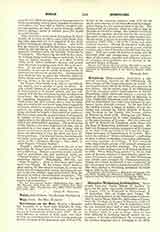

Hohenlohe-Waldenburg-Schillingsfurst, ALEXANDER LEOPOLD, titular Bishop of Sardica, famous for his many supposedly miraculous cures, b. August 17, 1794, at Kupferzell in Wurtemberg; d. November 14, 1849, at Voslau near Vienna. He studied the humanities at the Theresianum in Vienna, 1804-8, and at Berne, 1808-10; philosophy at Vienna, 1810-12; theology at Tyrnau in Hungary, 1812-14, and at Ellwangen, 1814-15. On September 16, 1815, he was ordained priest and at once devoted himself to the care of souls first at Stuttgart, then at Munich. In October, 1816, he went to Rome where he had little difficulty in justifying himself against the accusations of having administered the sacraments in the German language and of belonging to the Bible Society. On his return he made a pilgrimage to Loreto, and again arrived at Munich on March 23, 1817. On June 8 of the same year he was made ecclesiastical councillor, and, in 1821, canon of Bamberg. About this time began the numerous miraculous cures which are alleged to have been effected through the prayers of Hohenlohe. On February 1, 1821, he was suddenly cured at Hassfurt of a severe pain in the throat in consequence of the prayers of a devout peasant named Martin Michel. His belief in the efficacy of prayer was greatly strengthened by this cure, and on June 21, 1821, he succeeded in curing the Princess Mathilda von Schwarzenberg, who had been a paralytic for eight years, by his prayers which he joined with those of Martin Michel. Having asked the pope whether he was permitted to attempt similar cures in the future, he was told not to attempt any more public cures, but he continued them in private. He would specify a time during which he would pray for those that applied to him, and in this manner he effected numerous cures not only on the Continent, but also in England, Ireland, and the United States. Worthy of mention is the case of Mrs. Ann Mattingly of Washington, D.C., who was said to have been cured of a tumor through his prayers on March 10, 1824. Rome did not pass judgment on these supposed miracles and Catholics were divided in their opinion. In 1824 Hohenlohe became canon, in 1829 provost, and later Vicar-General and Administrator of Grosswardein. In 1844 he was made chorepiscopus and titular Bishop of Sardica. He is the author of four volumes of sermons and ascetical treatises most of which were collected and published by S. Brunner (Ratisbon, 1851). His method of curing the sick was continued after his death by his friend and disciple Joseph Forster, pastor of Huttenheim, who died in 1875.
MICHAEL OTT

